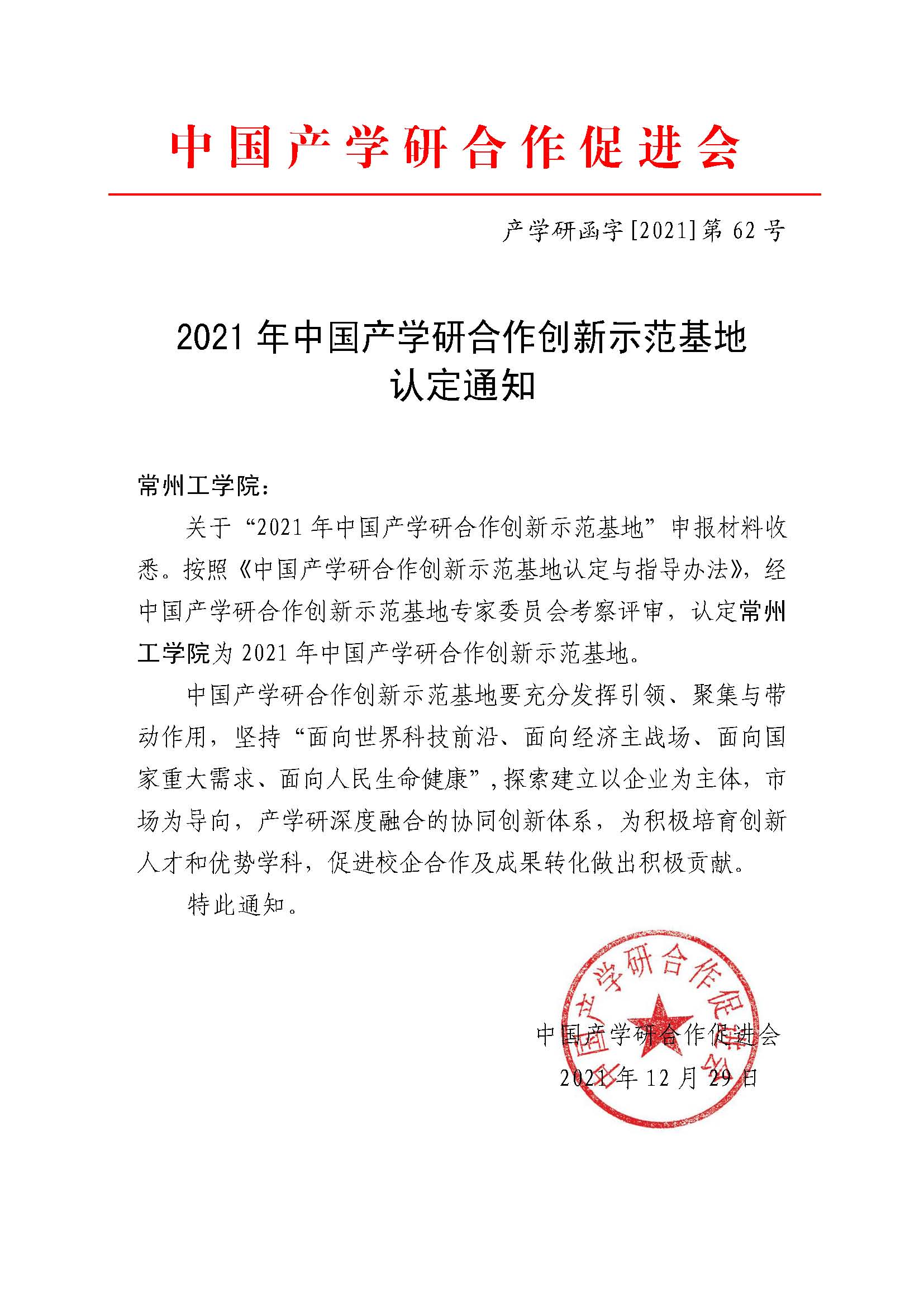On December 29, Changzhou Institute of Technology (CIT) was accredited as one of 19 demonstration bases nationwide by China Industry-University-Research Institute Collaboration Association as it published its Accreditation Notice on the 2021 Demonstration Bases for China Industry-University-Research Institute Collaborative Innovation.
The demonstration bases are selected on an annual basis by China Industry-University-Research Institute Collaboration Association (CIUR), an interactive platform for industries, universities and research institutes. As an inter-departmental, cross-sectional, inter-industrial and interdisciplinary platform, CIUR is established with the approval of the State Council, and the support and participation of the National Development and Reform Commission, the Ministry of Education, the Ministry of Science and Technology, the Ministry of Industry and Information Technology, the Ministry of Commerce, the State Owned Assets Supervision and Administration Commission of the State Council, the State Intellectual Property Office, the Chinese Academy of Sciences, the Chinese Academy of Engineering, and the China Association for Science and Technology as well as universities, research institutes and enterprises.
In recent years, CIT has made great efforts to address the issues related to its collaboration with local entities, and seized the opportunity of Changzhou as a pilot national industry-education integration city. Actively embedded into the industrial chain, it is further integrated with industries, and well based on local industrial and cultural resources to bring into play its edge in scientific and technological teams. As the initiatives that set "one faculty to one town, one hundred teams for one hundred businesses", "introduce business to the campus", and "encourage professors into businesses as deputy CTOs/chief engineers and technology transfer" are put into place across the campus, a distinctive CIT model of industry-university integration has gradually come into being, bringing into relief CIT’s attributes in application, service, industry and region. The model has facilitated CIT’s integration with industry and its high quality development, and gained good economic and social benefits and a social reputation for the university. From 2019 to 2021, the funds for horizontal scientific research projects amounted to 81 million yuan, 90 million yuan and 130 million yuan respectively, and the cumulative output of patents added up to 500 pieces, with a total of 108 teachers selected into the provincial industry-university integration projects as the "deputy CTOs/chief engineers".
There emerges a remarkable improvement effect on the quality of talent development as the industry-education integration goes deeper. CIT has seen 36 projects approved at the provincial level or above, more than 50 courses and textbooks developed with relevant enterprises, and 4 schools recognized as industrial colleges, of which 2 was rated as provincial key industrial colleges and 1 ranked among the first national key industrial colleges. The CIT model, cases and special development reports of industry-education integration were highly spoken of by the provincial and municipal leaders and reported by authoritative agencies and media, including China Association of Higher Education, China Higher Education Expo, Special Reporting Information of the Provincial Government, Special Reporting of the Provincial Department of Education, Decision Reference of the CPC Changzhou Municipal Committee, etc.



